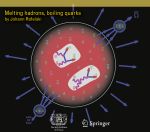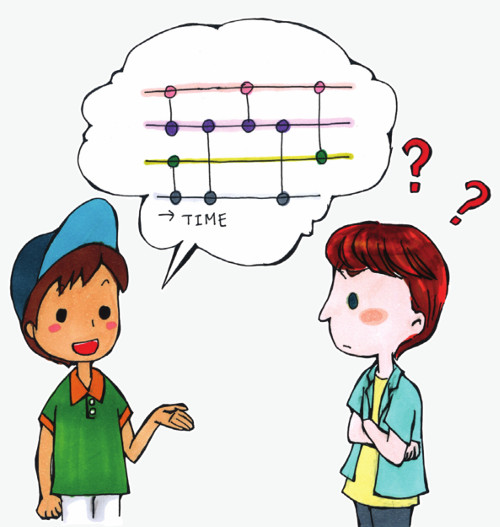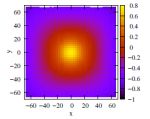News
EPJ H Highlight - May the 5th force be with you
- Details
- Published on 27 October 2015

Ephraim Fischbach revisits the wealth of research emerging from the quest for the fifth force, which he hypothesised in the 1980s as being a new fundamental force in nature
Discovering possible new forces in nature is no mean task. The discovery of gravity linked to Newton’s arguably apocryphal apple experiment has remained anchored in popular culture. In January 1986, Ephraim Fischbach, Physics Professor from Purdue University in West Lafayette, Indiana, had his own chance to leave his mark on collective memory. His work made the front page of the New York Times after he and his co-authors published a study uncovering the tantalising possibility of the existence of a fifth force in the universe. In an article published in EPJ H, Fischbach gives a personal account of how the existence of the gravity-style fifth force has stimulated an unprecedented amount of research in gravitational physics - even though its existence, as initially formulated, has not been confirmed by experiment.
EPJ A Review - Melting hadrons, boiling quarks
- Details
- Published on 27 October 2015

In the context of the Hagedorn temperature half-centenary our understanding of the hot phases of hadronic matter both below and above the Hagedorn temperature is reviewed. The first part of this review paper just published in EPJ A addresses many frequently posed questions about properties of hadronic matter in different phases, phase transition and the exploration of quark-gluon plasma (QGP). The historical context of the discovery of QGP is described and the role of strangeness and strange antibaryon signature of QGP illustrated. In the second part the corresponding theoretical ideas and how experimental results can be used to describe the properties of QGP at hadronization are described.
EPJ Data Science Highlight - Using patients’ trail of digital crumbs for public health surveillance
- Details
- Published on 20 October 2015

© bakhtiarzein / Fotolia
Public health agencies could capitalise on streams of data related to patients on the internet but only once interpretation methods have been validated.
Data is ubiquitous. In the area of heath, there are growing data streams directly initiated by patients through their activities on the internet and on social networks and other related ones such as electronic medical records and pharmacy sales data. These so-called Novel Data Streams (NDS) are very appealing to public health surveillance officials due to their ease of collection. A new paper published in EPJ Data Science evaluates the currently available NDS surveillance papers before outlining a conceptual framework for integrating such data into current public health surveillance systems. The authors, who hail from public health agencies, academia, and the private sector, highlight the need for future rigorous evaluation and validation of standards before NDS can effectively reinforce existing public health surveillance systems.
EPJ B Highlight - Anti-clumping strategy for nanoparticles
- Details
- Published on 16 October 2015

Scientists identify the factors involved in preventing nanoparticles used in industrial applications from aggregating
Nanoparticles are ubiquitous in industrial applications ranging from drug delivery and biomedical diagnostics to developing hydrophobic surfaces, lubricant additives and enhanced oil recovery solutions in petroleum fields. For such nanoparticles to be effective, they need to remain well dispersed into the fluid surrounding them. In a study published in EPJ B, Brazilian physicists identified the conditions that lead to instability of nanoparticles and producing aggregates. This happens when the electric force on their surface no longer balances by the sum of the attractive or repulsive forces between nanoparticles. These findings were recently published by Lucas de Lara from the Centre for Natural and Human Sciences, at the University Federal of ABC (UFABC) in Santo André, SP, Brazil and colleagues.
EPJ TI Review - Trapping Molecules on Chips
- Details
- Published on 12 October 2015

In recent years, it has been demonstrated that neutral molecules can be loaded on a microchip directly from a supersonic beam. The molecules are confined in microscopic traps that can be moved smoothly over the surface of the chip. Once the molecules are trapped, they can be decelerated to a standstill, for instance, or pumped into selected quantum states by laser light or microwaves. Molecules are detected on the chip by time-resolved spatial imaging, which allows for the study of the distribution in the phase space of the molecular ensemble.
In this Tutorial Review article, part of the thematic series for Methods for Cold Molecules and Ions, the author introduces the techniques used to trap cold molecules on microchips, and reviews some of the recent developments in this field. First, the essential features of microchip design and the necessary experimental setup are described. Then, the problem of nonadiabatic losses from the microtraps is addressed and the most viable solutions are presented. Further, some recent results on state transition of trapped molecules are presented, involving rotational and vibrational transitions. And finally, on-chip detection and imaging is briefly discussed.
EPJ D Highlight - New way of retaining quantum memories stored in light
- Details
- Published on 23 September 2015

Chinese scientists uncover a novel way of stopping light in a state that stores information encoded in photons, opening the door to applications in quantum information processing
A team of Chinese physicists has now developed a way to confine light. This is significant because the approach allows quantum memories stored within photons to be retained. These findings stem from a study by Nan Sun from Nanjing University of Posts & Telecommunications, China, and colleagues, which has just been published in EPJ D. The results may herald the advent of a multitude of hybrid, optoelectronic devices relying on the use of quantum information stored in photons for processing information that can be used in communication networks or quantum computing.
EPJB Colloquium: Modern temporal network theory
- Details
- Published on 18 September 2015

The power of any kind of network approach lies in its ability to simplify a complex system so as to better understand its function as a whole. Sometimes it is beneficial, however, to include more information than is available in a simple graph of nodes and links. Adding information related to the timing of interactions can facilitate more accurate predictions, as well as a deeper mechanistic understanding.
EPJ B Highlight - Surfing over simulated ripples in graphene
- Details
- Published on 17 September 2015

Scientists from India elucidate the theory governing the characteristics of curved or rippled graphene using a simulation model based on an optical lattice
The single-carbon-atom-thick material, graphene, featuring ripples is not easy to understand. Instead of creating such ripples physically, physicists investigating this kind of unusually shaped material rely on a quantum simulator. It is made up of an artificial lattice of light - called ultra-cold optical lattice - akin to eggs held in the cavities of an egg tray. This approach allowed a team of theoretical physicists from India to shed some light - literally and figuratively - on the properties of rippled graphene. These findings have just been published in EPJ B by Tridev Mishra and colleagues from the Birla Institute of Technology and Science, in Pilani, India. Ultimately, this work could find applications in novel graphene-based sensors.
EPJ TI publishes two tutorial style articles from the group of Sebastiaan van de Meerakker
- Details
- Published on 17 August 2015

As part of the new Thematic Series ”Methods for Cold Molecules and Ions: Tutorial Reviews” (Guest Eds. Stefan Willitsch, Hendrick Bethlem, Bob Continetti), EPJ Techniques and Instrumentation features two tutorial style articles from the group of Sebastiaan van de Meerakker (Radboud University, Netherlands).
EPJ TI Review - Merged neutral beams
- Details
- Published on 17 August 2015

A new review article has just been published in EPJ Techniques and Instrumentation, opening a new Thematic Series ”Methods for Cold Molecules and Ions: Tutorial Reviews” (Guest Eds. Stefan Willitsch, Hendrick Bethlem, Bob Continetti).
Merged neutral beams (EPJ Techniques and Instrumentation 2015, 2:10) by Andreas Osterwalder (EPFL, Switzerland) presents a detailed description of a merged beam apparatus for the study of low energy molecular scattering. In the experiment performed, a supersonic expansion of paramagnetic particles is merged with one of polar molecules, whilst a magnetic and an electric multipole guide are used to bend the two beams onto the same axis. Intended to inform any scientist who plans to construct a similar experiment, the article describes in detail how the apparatus was designed, characterised, and operated.




